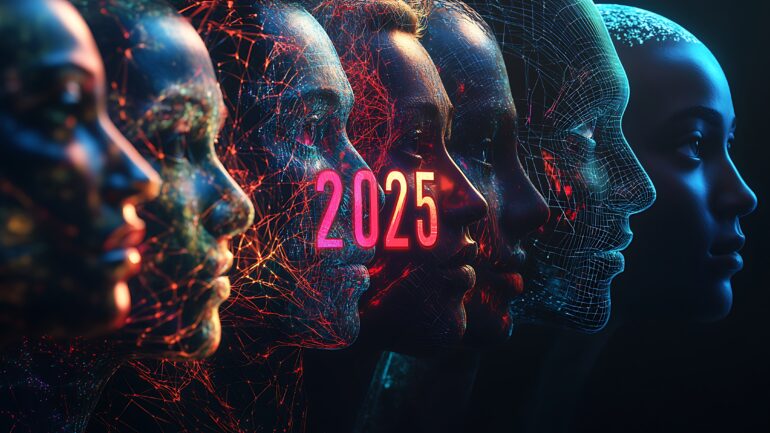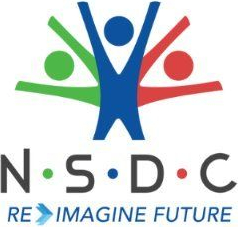2025 Will be the Year of Accessible Intelligence – AI in Everything

Amidst the swirl of new technologies, soaring ambitions, and geopolitical manoeuvring, businesses face both uncertainty and unprecedented opportunities.What remains to be seen is how quickly we can adapt, and which of these breakthroughs will prove most impactful in shaping the future of work and society
At CES 2025, the world got a fresh glimpse of just how rapidly artificial intelligence is evolving –robots roamed exhibit halls with uncanny agility, and entire virtual landscapes seemed to spring up in real time at the press of a button. These displays signalled an unmistakable shift: AI is no longer content with generating novel images or short videos. It is aiming for deeper territory, creating immersive realities, helping scientists design new materials, and weaving itself into everything from national defence to the semiconductor supply chain.
A central development is the emergence of generative virtual worlds – an evolution of last year’s wave of AI-generated videos. These new systems not only build static content; they form interactive playgrounds. Google DeepMind’s Genie 2, for example, can transform a single snapshot into a sprawling environment that responds dynamically to user inputs, a concept that could upend how video games are developed. Startups like Decart and Etched have pushed this frontier further by generating entire game frames in real time, as showcased in an unofficial Minecraft modification. These leaps in technology provide a tantalising prospect for industries that have long relied on trial and error. Instead of spending months or years fine-tuning a robot’s movements in the real world, engineers can drop a virtual prototype into a simulated environment and let it learn by navigating thousands of variations in a fraction of the time.
A second sign of the AI industry’s evolution is the arrival of large language models designed to “reason.” Until recently, most of these models simply generated the first response they arrived at – impressive for some tasks but prone to basic errors in math or logic. Now, new models such as OpenAI’s “o1” and “o3,” as well as Google DeepMind’s experimental Gemini 2.0, take a more methodical approach, breaking down a question into smaller steps and trying different approaches before settling on a final answer. The difference becomes especially clear in fields like physics and coding, where step-by-step reasoning can avert the pitfalls of earlier AI systems. When paired with AI-driven web-browsing tools – like DeepMind’s Mariner, which can retrace its path and select a more suitable data source after hitting a digital dead end – these models hint at a future where AI agents act less like automated chatbots and more like tireless virtual assistants capable of planning and problem-solving on our behalf.
In parallel with these advances, AI research is making significant inroads into the scientific realm. AlphaFold’s landmark success in protein folding not only secured Nobel recognition for Demis Hassabis, John M. Jumper, and David Baker; it also opened the floodgates for other AI-driven breakthroughs in biology, chemistry, and materials science. Tech companies such as Meta have begun releasing massive datasets to the public, aiming to help scientists develop new compounds and substances more quickly. Meanwhile, startups like Entalpic have rolled out open-source catalogues that consolidate and standardise separate materials databases, hoping to give researchers a jump start on experiments that might otherwise take years. The long-term vision, shared by founders like Dario Amodei at Anthropic, is that AI systems could one day function almost like virtual scientists – formulating hypotheses, running simulations, and synthesising results without human micromanagement. Although that prospect remains distant, next year may offer crucial steps toward making it a reality.
Companies looking to tap into AI’s potential will find ample support from an unexpected source: the defence sector. The U.S. and European militaries have made clear they intend to integrate AI into missions ranging from border monitoring to battlefield decision-making, a shift spurred in part by geopolitical tensions and real-world conflicts. This is good news for the many AI startups and tech giants that are increasingly interested in defence contracts. After long maintaining a more cautious stance, OpenAI recently partnered with Anduril to develop technology aimed at neutralising enemy drones – a move that signals a new willingness to bring AI to the military sphere. For such companies, the challenge extends beyond purely ethical concerns; it involves navigating a complex web of regulations and public scrutiny. As defence budgets swell and governments scramble for cutting-edge technology, many AI developers will have to decide whether the benefits outweigh the risks.
A final, critical subplot revolves around competition for Nvidia, the chip-manufacturing powerhouse that has dominated the AI boom thus far. Amazon, Broadcom, AMD, and a host of smaller challengers have begun unveiling next-generation chips that rival Nvidia’s products in efficiency and performance, particularly in the phase known as inference—when an AI system actually runs the tasks it has been trained on. Moreover, rising geopolitical tensions have governments pushing for “onshore” semiconductor production. The U.S. CHIPS Act, designed to reduce reliance on foreign manufacturing, is funnelling substantial funding into domestic plants. Yet these efforts come amid trade disputes and potential tariffs that could disrupt supply chains worldwide, placing pressure on AI chipmakers to rethink their reliance on Taiwan’s TSMC, the manufacturing titan that supplies the majority of high-end chips.
In this swirl of new technologies, soaring ambitions, and geopolitical manoeuvring, businesses face both uncertainty and unprecedented opportunities. If the displays at CES were any indication, 2025 is poised to mark another leap forward – a time when AI systems begin to manage entire factories virtually, conjure 3D experiences from scratch, and propose novel molecules for drugs or sustainable materials. The question for companies and consumers alike is how to harness these advancements responsibly. For some, it may mean investing in AI-driven research to speed innovation or exploring automated tools that can tackle the drudgery of routine tasks. For others, it may involve grappling with the ethical complexities of working with military institutions or deciding whether to rely on tech that could shift the balance of global competition.
AI’s evolution may be happening at breakneck speed, but it is also becoming more accessible. Now is the time to examine whether generative virtual worlds could transform how we game and prototype, or if a “reasoning” language model might help employees do their jobs more accurately. From laboratory breakthroughs to militarised drones to reimagined supply chains, the technology is broadening its scope. What remains to be seen is how quickly we can adapt our businesses, institutions, and ethical frameworks to keep pace, and which of these breakthroughs will prove most impactful in shaping the future of work and society.


